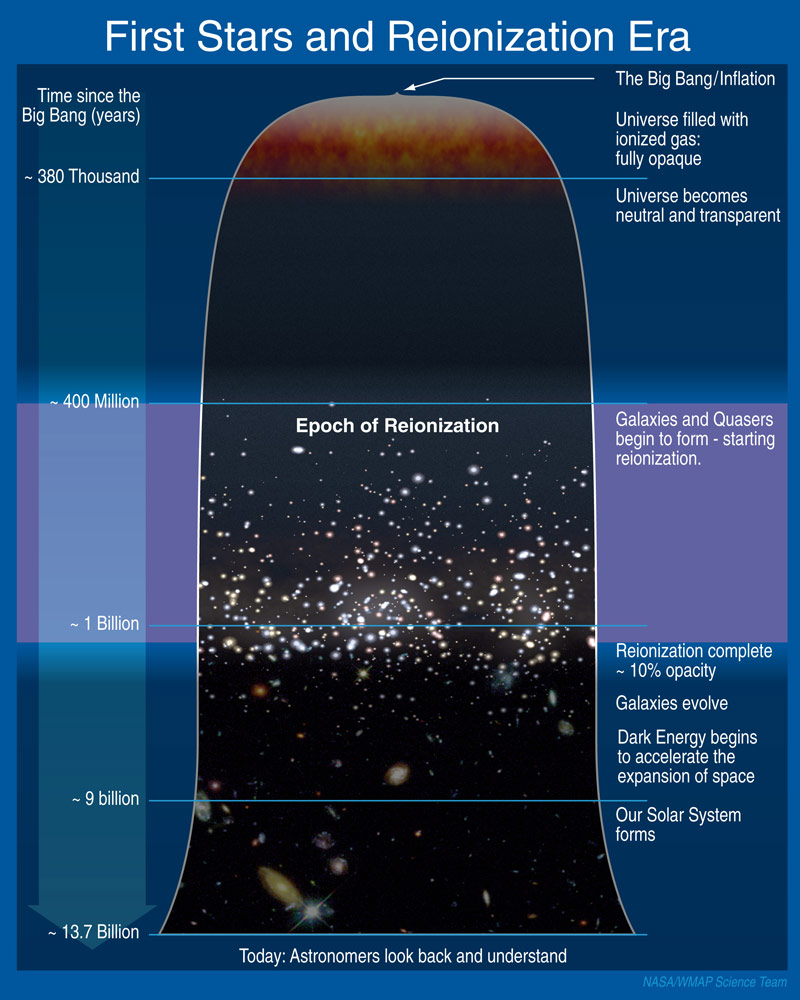James Webb Space Telescope Special Exhibit
The End of the Dark Ages: First Stars and Reionization
Until around 400,000,000 years after the Big Bang, the universe was a very dark place. There were no stars, and there were no galaxies. Scientists would like to unravel the story of exactly what happened after the Big Bang. The James Webb Space Telescope will pierce this veil of mystery and reveal the story of the formation of the first stars and galaxies in the universe.

What is the Reionization Era? A Schematic Outline of the Cosmic History (Credit: NASA/WMAP Science Team)
Theory predicts that the first stars were 30 to 300 times more massive than our Sun and millions of times brighter, burning for only a few million years before exploding as supernovas. The energetic ultraviolet light from these first stars was capable of splitting hydrogen atoms into electrons and protons (or ionizing them). Observations of distant quasars tell us that this occurred when the universe was almost a billion years old.
That time, when the universe was a billion years old, is known as "the epoch of reionization." It refers to the point when most of the neutral hydrogen was destroyed by the increasing radiation from the first massive stars. Reionization is an important phenomenon in our Universe's history as it presents one of the few means by which we can (indirectly) study these earliest stars. But scientists do not know exactly when the first stars formed and when this reionization process started to occur.
Understanding these first sources is critical, since they greatly influenced the formation of later objects such as galaxies. The first sources of light act as seeds for the later formation of larger objects.
To find the first stars and galaxies, Webb will make very deep near-infrared surveys of the universe. It will then conduct follow-up observations of the oldest objects found through this survey (those at very high redshifts) using a combination of spectroscopy and photometry. Measurements of particular features in the spectrum (principally absorption lines) will then help to determine the epoch and the nature of the reionization.
Published: April 2007
Text Reviewed: September 2018


